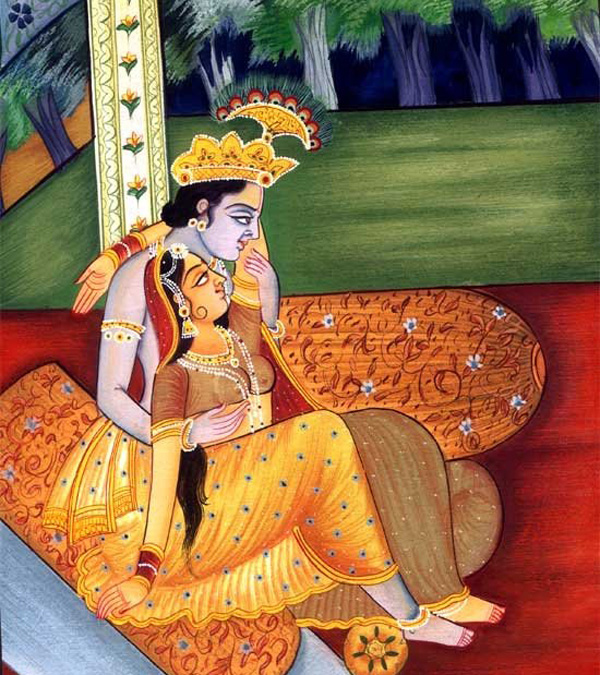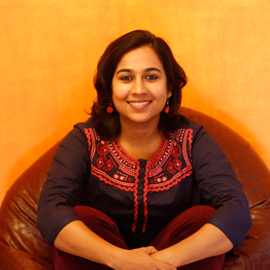This Dussehra, fellow Hindus, let's burn the evil that divides us

Spreading evil
- This country is increasingly lurching towards intolerance
- Hindu extremists are using religious symbols to divide people
- Recently, people have been killed for allegedly eating beef
Fighting for good
- This Dussehra, let\'s vanquish the evil that divides us
- Hindu tradition is: tolerance, celebrating diversity, gender equality
- Hinduism isn\'t: censoring ideas, degrading women, bigotry
Today, Hindus celebrate the victory of good over evil. Two victories, in fact.
One, the vanquishing of Mahisasur by the Goddess Durga, astride a lion and glowing with the power of 10,000 suns, after a 10-day-long mythological battle. Her trident piercing the demon symbolising a poetic destruction of evil.
The other is Ram's slaying of the 10-headed Ravan to rescue his wife Sita from Lanka.
Today, as we watch Durga's idols returned to water and Ravan's effigies burnt into the night, it is a good time to do some soul searching.
We can start by asking: as Hindus, what must we vanquish? What evil are we waging war on today? Most important, what does our ancient religion teach us?
We are more than what we eat, or don't eat

If extremists from the RSS stable were to answer, they would identify cow slaughterers and "anti-Hindus", whatever the term means. Their followers have already "punished" sinners against the cow from Dadri to Himachal Pradesh to J&K.
As for their reasons, Vinay Krishna Chaturvedi just sermonised in the Sangh mouthpiece Panchajanya that "Vedas order the killing of those who slaughter cows".
Never mind that the scriptures propagate exactly the opposite, according to experts on Hindu philosophy.
They quote verses from the Vedas to prove that Brahmins enjoyed eating meat and beef in particular. One verse, Utchanaam Apashath, in fact reveals that even Brahmin rishis cooked beef.
The sage Vasishta is said to have relished eating beef, the calf's tongue being his favourite. In the verse Vatsataraha Phataphatayante, it says that when Vasishta walked in, the calves trembled with fear. The Vasisht Dharmasutra says, "If a Brahmin refuses to eat the meat offered to him on the occasion of Shraddha or worship, he goes to hell."
The Pandavas, while in exile, treated the Brahmins to rice and what the Parsis called Dhansak, mutton mixed lentils and vegetables. There are enough and more verses in the Vedas and the Manu Smriti that clearly demonstrate that most Hindu Brahmins consumed meat.
How did we come from there to slaying people on the mere suspicion of eating beef?
The experts say it was the influence of Buddhism and Jainism as well as other cultural changes over the centuries that created the notion of vegetarian Hindus.
Now, thanks to the extremists, the dominant strain of Hinduism is becoming increasingly reductionist. What you eat has begun to determine how good a Hindu you are.
We are not ashamed of our bodies, we celebrate them

Why is this so important? Because life emerges from sex. The sexual organs are sacred in Hindu mythology because they perpetuate life itself.
Indeed, even our gods and goddesses embraced their sexuality. Being sexual in no way meant you were lowly, characterless or vulnerable to be abused. It was a sign of power, beauty and vitality.
In Soundarya Lahari, written by Adi Shankara around 2000 BC, Parvati's body is described in great sexual detail thus:
Oh Goddess mine,
Placed just below your shoulders,
By Cupid, the God of love,
Tearing your blouse which is attached to your body by the sweat,
When you think of the greatness of your Lord,
Resembling pots of gold your breasts appear to be tied by him,
Securely three times by the three creeper like folds.
Your behinds are broad and dense,
And, therefore, they both hide all the world,
And make the world light, in comparison
Hinduism also expresses comfort with homosexuality and a third gender. The Mahabharata mentions Budh, the planet Mercury, who is a neuter marrying Ila, a man who turns into a woman when he trespasses into a forest.
There is also Brihaspati, or Jupiter, who discovers that his wife Tara, the goddess of stars, is pregnant with the child of her lover, Chandra, the moon god. He, therefore, curses the unborn child.
Our woman is free, equal and strong
Hindu goddesses are considered incarnations of Shakti, the creative force of the universe.
The opening verse of Soundarya Lahari says:
Shivah shakthya yukto yadi bhavati shaktah prabhavitum
Na chedevam devo na khalu kusalah spanditumapi
Lord Shiva, only becomes able,
To do creation in this world,
along with Shakti.
Without her,
Even an inch he cannot move.
The Hindu mythology recognises the goddesses as having many dimensions. Durga has nine forms, each emerging from a facet of her feminine energy.
As Mahisasuramardini, she is the destroyer of evil; her 10 mighty arms wielding lethal weapons, she triumphantly slays Mahisasur. As Kali, she turns black as the night, a garland of skulls her only garb; intoxicated, she assumes terrible rage and fury.
As Parvati, she is serene, the pretty consort of Shiva, sitting by his side in the snowy peaks of the Kailash. She is Bhawani, the symbol of life. She is Sati, the object of death. She is Basanti, the heralder of springtime. And she is so much more.
Unlike today, when a "good" Hindu woman is supposed to be chaste, demure and submissive, the goddesses of mythology exuded power and authority. They even waged awe-inspiring battles to rescue their male counterparts from the evil, as Durga did.
A culture of debate doesn't diminish us, it elevates us
We have a long tradition of Shastrarth, a culture of public debate to examine whatever convictions you held. It was a great tradition precisely because it nurtured a plurality of traditions and beliefs.
In the olden days, even the greatest religious leaders could be challenged and it was their duty to either answer the questions raised or gracefully accept defeat.
Legend has it that once Adi Sankara was on his way to the Kashi Vishwanath temple and he saw a Shudra, a lower caste, coming from the other side with four dogs. Shankara's disciple asked the Shudra to move away from the path so the sage could pass without touching him and his dogs. The Shudra asked Shankara whether he was being asked to move the non-dying Atma or the body in which the Atma resided now and which was perishable.
Adi Sankara realised then that it was Shiva in the garb of a Shudra and the dogs were the four Vedas. Sankara fell prostrate before him and instantly started composing the Manisha Panchakam, which is the essence of Advaita philosophy.
We celebrate diversity of faith and thought
For the most part, practicing Hindus follow the Dvaita school of thought. Dvaitam or Dvaita means duality. It sees an individual and the god as two separate entities like most other religions.
In Dvaita, a Hindu could worship one or many of the lakhs of gods in idols and various notions with form. Each god has its own role in the universe, its unique personality traits, peculiarities, rules and preferences in food, colour of clothes and the way of life.
Krishna likes the flute, loves the yellow colour, enjoys butter and cream and malpua, and loves sitting on a swing. Shiva lives in the icy Kailash, rides a bull, wears just a ragged tiger skin on his ash-smeared body and a snake around his neck and leaves his flowing matted locks unkempt. He loves to be worshipped with water and leaves from the bilva tree.
In Dvaita, we are constantly distinguishing why you and I are different. I am Hindu, she a Muslim. This is a worm, that the ocean. We have our roles to perform but we also ardently defend our territories.
In today's world of extensive classifications, Dvait appears to be more problematic than we can imagine. Especially when organisations in the mould of the Sangh Parivar take it upon themselves to ensure the differences remain and no lines are blurred. Beyond a point, the boxes are stifling.
It is here that Advaita liberates. Advait sees the substratum of everything in the universe as one Divine Self or Universal Consciousness. The verse Sarvam Brahmamayam is used to explain the crux of this philosophy. It means everything is Brahman or the Divine Self.
Advaita teaches you to see the substratum of the same consciousness in every bit of matter, living or non-living. Differences, it insists, are a figment of imagination, pure illusion.
In Sri Rudram, an ode to Shiva, he is worshipped as the Divine Self.
Viroopebhyo Viswaroopebhyascha vo namo nama
Mahadbhya kshullakebyascha vo namo nama
Radhibhyo aradhebhyascha vo namo nama
Salutations and salutations,
To him who looks ugly,
And to him who looks just as every one in the world.
To him who is a great soul,
And to him who is a weak being.
To him who rides a chariot,
And to him who does not have a chariot.
The verses go on rapidly seeing every self-pervading speck of nature coming from the Divine Self, one that rides the crest of the tide and lurks in the depths of the ocean, who sits atop green forests and pervades marshy wetlands.
Advaita invites you to recognise the futility in differences and unlearn all the knowledge you've painstakingly acquired based on differentiation of form and matter.
Ultimately, Advaita says that all gods are one.
Akashat patitam toyam
yatha gatchati sagaram
sarva deva namaskarah
keshavam pratigacchati
As all raindrops falling from the sky ultimately meet their end in the ocean, Prayers offered to all gods ultimately reach the One Lord.
The verse Sama Loshtana Kanchanam says that one who realises that clay, stone and gold are one and the same, is the realised one!
So, this Dussehra, let us burn away our instincts to divide, separate, box in, enforce, enclose and trap. Let us Hindus remind ourselves that whether we are meat-eaters or vegetarians, we have the same consciousness infusing our bodies with life.
Let the battle we wage be within ourselves, to vanquish our baser instincts and make room for higher truths.
First published: 22 October 2015, 8:04 IST





![BJP's Kapil Mishra recreates Shankar Mahadevan’s ‘Breathless’ song to highlight Delhi pollution [WATCH] BJP's Kapil Mishra recreates Shankar Mahadevan’s ‘Breathless’ song to highlight Delhi pollution [WATCH]](https://images.catchnews.com/upload/2022/11/03/kapil-mishra_240884_300x172.png)

![Anupam Kher shares pictures of his toned body on 67th birthday [MUST SEE] Anupam Kher shares pictures of his toned body on 67th birthday [MUST SEE]](https://images.catchnews.com/upload/2022/03/07/Anupam_kher_231145_300x172.jpg)






